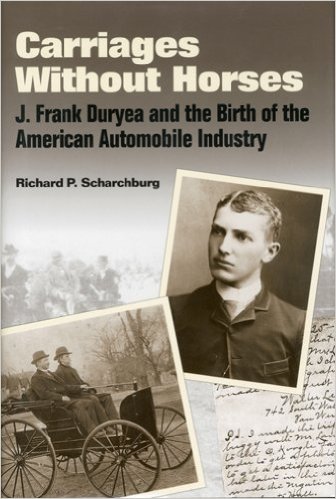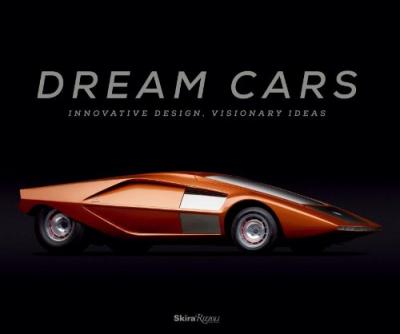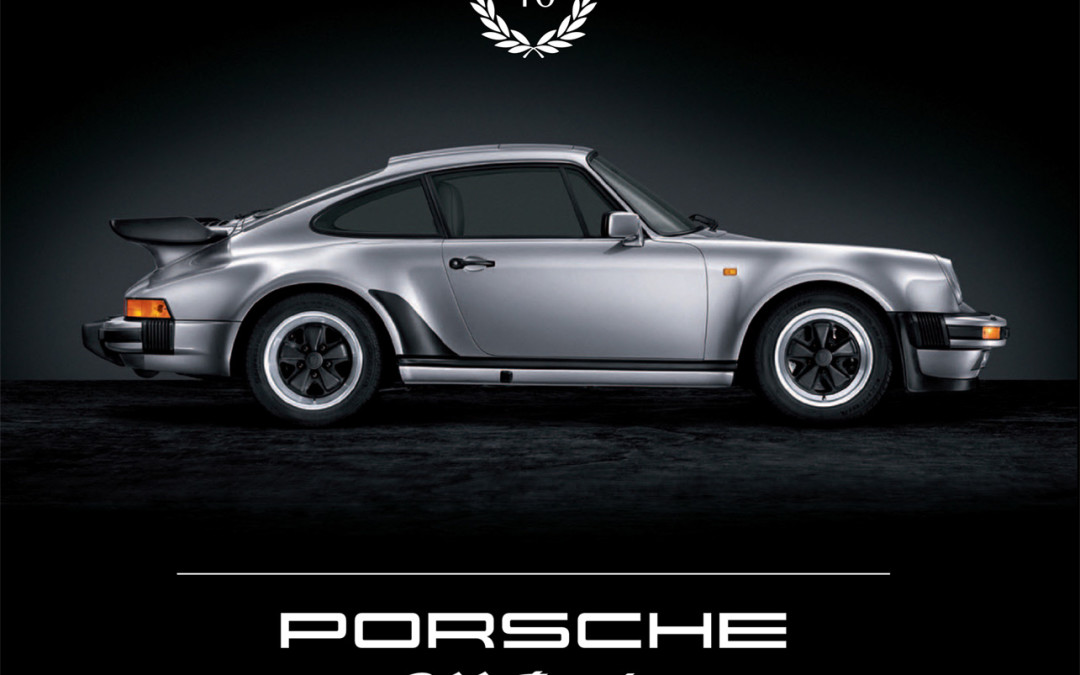
Realize your Ford Coyote engine’s full potential by using this detailed resource as a guide to select the right parts for the street or the strip.
Veteran Ford writer and historian, Jim Smart, explains and highlights all of the latest and greatest options to achieve more horsepower and torque, and of course, faster quarter-mile times in Ford Coyote Engines: How to Build Max Performance.
Some upgrades included are engine building techniques, cold-air induction kits, supercharger and pulley kits, better exhaust headers, fuel system and ECU tuning upgrades, and more. Both Ford and the aftermarket have produced an array of parts to squeeze even more power out of your Coyote.
Ford introduced its first clean slate design V-8 engines in the early 1990s in Ford, Lincoln, and Mercury models. Known as the “Modular” engine family, the 4.6L engines employed new overhead cams, multi-valve performance, distributorless ignition, and more. This engine had new technology for its time, and it proved to be an extremely durable workhorse that logged hundreds of thousands of miles in police and taxi applications as well as light-duty trucks. And, of course, hotter versions, and even supercharged versions, found their way into performance applications such as Mustang GTs and Cobras.
By 2011, Ford wanted something hotter and more current, especially for its flagship Mustang GT and GT350 models, which were suddenly competing with new 6.2L LS3 engines in Camaros and 6.4L Hemi engines in Challengers. Enter Ford’s new 5.0L Coyote engine with Twin Independent Variable Cam Timing (Ti-VCT); it was an evolution of the earlier 4.6L and 5.4L Modular designs. Although the new Coyote engine had increased displacement, it still had far fewer cubes than the competition. Despite less displacement, the Coyote could hold its own against bigger Chevy and Chrysler mills thanks to advanced technology, such as 4V heads with better port and valvetrain geometry. The Coyote is also Ford’s first foray into technology that includes Ti-VCT and cam-torque-actuated (CTA) function, which is a fancy way of saying variable cam timing for an incredible power curve over a broader RPM range.
Even with all of this new technology, there is always room for improvement. If you are looking for even more power from your new Coyote, look no further than this volume.

In September 1893, little could 23-year-old mechanic J. Frank Duryea dream of the changes that would be brought about by his creation – a frail gasoline buggy that made its debut on the streets of Springfield, Massachusetts. ‘When I began work upon the horseless carriage back in 1892, no one could see what the automobile would mean to my fellow beings in peace or in war. And yet, the automobile to this very day contains not a few of the fundamental features which I was the first to devise, design, build, or order built to my specifications.’ – J. Frank Duryea (1942) ‘What we have is a family feud – without the violence – rivaling the legendary Hatfields and McCoys.’ Charles E. and J. Frank Duryea, two brothers from rural Illinois, were the founders of the American automobile industry. The Duryea Motor Wagon company was the first company organized in the United States for the manufacture of automobiles. The attention-getting, older brother Charles demanded – and to date has received – the principal credit for these pioneering accomplishments. A bitter family feud between the brothers, which was even carried on by their families after their deaths, further muddied the question about the individual brothers’ contributions. However, in Carriages Without Horses: J. Frank Duryea and the Birth of the American Automobile Industry, historian and author Richard P. Scharchburg proves that the quiet, self-effacing younger brother J. Frank Duryea is unquestionably entitled to as much credit as Charles, if not considerably more. J. Frank did the actual work of construction on the cars, and was responsible for the practical designing and engineering of all components (aside from the steering mechanism) of the Duryea cars. More than an account of the struggle for precedence between brothers, however, Carriages Without Horses tells the story of America’s first automobile company taking shape. Scharchburg covers the design and development of the first Duryea car, culminating with its successful operation on the streets of Springfield, Massachusetts on September 21, 1893. This book also covers: the landmark Chicago Times-Herald race of 1895, won by the Duryea car built and driven by J. Frank; the subsequent progress of the Duryea Motor Wagon Company; and, after the brothers went their separate ways, J. Frank’s 1901 founding of the Stevens-Duryea Company.

A sensuously designed showcase of covetable concept or limited-edition cars by the best American and European manufacturers. Dream Cars presents some of the world’s most breathtaking concept cars built between 1934 and 2001, a series of visionary designs that influenced the automotive industry and challenged notions of what is possible both aesthetically and technologically. Stunning all-new photography of design pioneers such as the 1935 Bugatti Type 57 Aerolithe, the 1951 LeSabre concept car, and the 1954 Alfa Romeo B.A.T. 7 accompany lush images of dream sports cars, including the 1970 Ferrari Modulo and the 1955 Ghia Streamline X “Gilda.” Meticulously restored and brought to life by all-new photography, these images trace a lineage of innovation in automobile design.
Comprehensive descriptions by celebrated automotive writer Ken Gross as well as drawings and scaled models further illustrate the imaginative force of individual designers and famed manufacturers. Surprising insights into familiar models like the minivan, based on the streamlined silhouette of the Stout Scarab concept car developed in 1936, are juxtaposed with startling new technologies such as the 2001 BMW GINA Light Visionary Model’s ingenious use of fabric as a retractable skin. An extended essay by Sarah Schleuning explores the effects of aerodynamics and aeronautics on car design and considers how groundbreaking events-such as General Motors’s Motorama-fueled the creativity of automobile styles.

SOLD OUT
NEW 2015 LIMITED EDITION Signed and Numbered
LIMITED EDITION “40” – Porsche 911 Turbo – Air Cooled Years 1975-1998 (published on 10.15.2015)
In spring 1975, the first Porsche 911 Turbo rolled to the dealers in the sales exhibition. Nearly 40 years later the car that changed the world, become a legend. “40” – Porsche 911 Turbo – Aircooled Years – tells the story of the sports car legend, starting with the prototype at the IAA 1973 and the last air-cooled 993 Turbo model year 1998. proved With the introduction of turbocharging in the standard sports cars that still young company Porsche their courage and innovativeness. The extraordinary success of the 911 Turbo contributed at the legendary sports car brand. In addition to mass-produced vehicles, the book is also intensively on special editions, such as the ten 930 Turbo S for Sonauto, the 964 Turbo Cabriolet, the 993 Turbo Cabriolet, or the 911 Turbo “package cars” from 1994, whose existence until today hardly anyone knows. The book was produced in close collaboration with the historical archive of Porsche AG and previously unpublished photographs showing. Rounding out this work is a detailed statistical part, to the internationally recognized Porsche expert Norbert Franz has created exclusive. Thus can be published for the first time the detailed numbers of each lot produced 911 Turbos. Furthermore, for the first time all the chassis numbers of original factory uprated vehicles are documented.
The second edition of the Porsche Turbo book “Aircooled Years 1975 – 1998″ has 70 extra pages and offers an even more detailed statistics section, created exclusively by internationally recognized Porsche expert Norbert Franz. For instance, it is now possible for the first time to publish the exact quantities of all the 911 Turbos ever produced, and, furthermore, all the chassis numbers of the original performance-enhanced vehicles (911 Turbo WLS) are documented for the very first time. In addition to the series-production vehicles, the book deals in detail with special series,such as the ten 930 Turbo S vehicles produced for Sonauto, the 964 Turbo Cabriolet, the 993 Turbo Cabriolet and the 911 Turbo “package cars” from 1994, whose existence is known only to a few even today.The book was written in close collaboration with the historical archive of Porsche AG and shows previously unpublished photographs of Porsche 911 Turbo Nr.1, which was driven by the daughter of Ferdinand Porsche, Louise Piech.
The book is published in a strictly limited edition of 2015 copies worldwide. Hardcover, 270 pages, German / English






